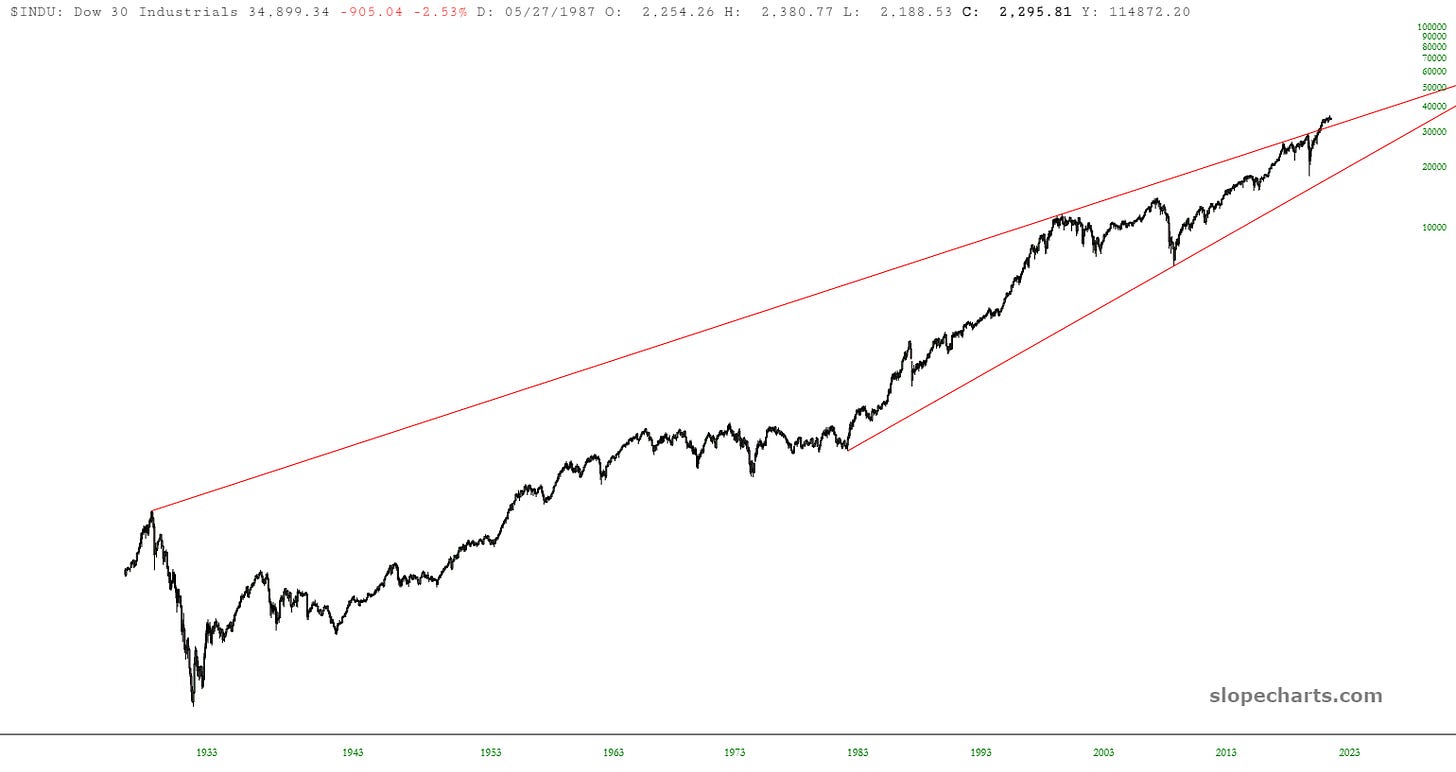Precisely one year ago I wrote a post explaining why I thought a major top in the markets was underway: This Might Be A Big One
All that said, here's my basic sense of it. One, coronavirus is bullshit. It's a distraction. There's a political and economic disaster unfolding because of societal responses, but doing nothing would have been the smarter move. Between the central banks and stimulus on one side and government lockdowns and vaccine passports on the other, this is the greatest policy alligator jaws in history. One hand is driving financial assets skyward, while the other hand sledgehammers the economy's foundation. Almost every policy is destructive. There will be a supposed boom caused by a transition away from carbon energy...but the whole process is expensive and makes energy more expensive to boot. There's no transition, it'll be a never-ending decline unless countries go big on nuclear power. (I still hold my uranium longs.) Coronavirus is a sideshow that is providing justification to push these crazy policies to extremes. Layer on the credit bubble that was never fully popped in 2008, the Eurozone still hasn't fixed its banks the way the Anglos/Irish/Iceland did, China has blown an epic credit bubble whose consequences still lie ahead.
Nothing has changed. The U.S. electorate voted for more of the same economically destructive policies, or at least didn’t send a “Hell no!” message to DC.
A year ago, omicron interrupted the topping process. It created an excuse for market weakness and extended bullish sentiment in the market. Similarly, today there is yet more Chinese reopening cheer: Markets Cheer Chinese Vaccine Drive Announcement Clearing Path Toward Reopening. Too bad vaccines don’t work. Too bad that, until proven otherwise, the Chinese economy is weakening.
Then we have this beauty in the FT: It is time to revisit the 2 per cent inflation target
On the cost side, the empirical evidence of revising the target suggested that while high inflation, say 10 per cent or more, could be very costly, the additional costs of 4 per cent inflation versus 2 per cent inflation were small. The main costs came from the distortions of an incompletely indexed tax system, but these could easily be eliminated by making the tax code inflation neutral. Indeed, the evidence suggested that a rate of inflation around 4 per cent made desirable relative wage adjustments much easier.
The article isn’t as bad as that part makes it sound, but I pulled this bit to highlight how economists still want to run the world based off academic models with a failure rate of 100 percent, implemented by central banks with failure rates of 100 percent. He thinks the central bank can tune the economy like a thermostat, when in reality it is more like a weatherman. One that is so inaccurate, it would predict 80 degree sunny days for Boston in the winter and 6 feet of snow in Florida’s summer.
The crux of the article has a good point though: let’s say the CPI gets down to 3 percent. What’s the cost/benefit of squeezing out that last 1 percent of inflation? It might not be worth crashing the economy for 1 percentage point of inflation, all else being equal. Assume that happens.
What does that world look like? The Federal Reserve will still have interest rates at 5 percent for one thing. If inflation settles at 5 percent, then rate cuts are “never” coming until the next recession and only if that recession takes inflation below 2 or 3 percent. In other words, regime change has arrived. Rates and inflation are in a secular bull market if 3 percent inflation is the new 2 percent. Thirty-year mortgages were between 7 and 10 percent when the CPI was reliably 3 percent in the 1990s and 2000s:
Finally, look at the charts I posted in that post from one year ago.
The S&P 500 Index near the 1929-2000 trendline. It would get closer before rolling over in January.
Palladium with the NQ overlaid. Last week, I showed palladium is hinting at a new leg lower with its topping pattern.
And then the DJIA. Above the 1929 to 2000 trendline.
Today, the second big rally of 2022 carried the Dow back above the 1929-2000 trendline.
As I said a year ago, I don’t have a crystal ball. Short-term stocks can move all over the map. Longer-term, stocks remain richly valued in an environment where higher inflation and higher interest rates erode the valuation of financial assets. An environment where economists and misguided stock market bulls are prodding central banks to ease up their inflation fight. One where the yield curve is also inverted like it hasn’t been since the early 1980s back-to-back recessions. One where the DJIA is sitting at a trendline drawn between the 1929 and 2000 tops, i.e. the trendline marking peak market optimism.









